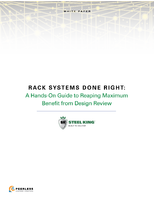Foam Formulations with Transcend® PUR Blends Offer Excellent Overall Performance as an Alternative to HCFC-22
Share:
Philadelphia, PA, April 5, 2007 - As the U.S. Environmental Protection Agency has formally announced that the use of HCFC-22 will be phased out across North America in "pour foam applications" on March 1, 2008 (this does not include marine foam applications), a major issue for remaining HCFC-22 users is which alternative to choose. Tests conducted by Arkema technologists have shown that Transcend® PUR blends are a suitable replacement for HCFC-22 for pour-in-place blowing agent formulations for polyurethane rigid foams. The Transcend® PUR blends offer foam manufacturers a new, viable and more cost-effective replacement option.
Arkema is ready to work with its customers as they evaluate technology alternatives and seek regulatory approvals. Evaluation quantities of Transcend® PUR blends are available and production quantities will be commercially available to meet customer requirements as the replacement deadline approaches.
Transcend® Additive in The Blend Makes The Critical Difference
Arkema tests show that a combination of Transcend® additive and HFC-134a can produce foams having at least the equivalent and, in some cases, better overall performance compared to HCFC-22 and HFC-134a in generic pour-in-place rigid polyurethane foam formulations. In addition to easier handling, as demonstrated by the lower vapor pressures and faster blowing agent addition time to the polyol pre-blend, formulations containing 10-20 weight percent Transcend® additive (weight percent of the total blowing agent) have improved flow, gives adequate dimensional stability, and excellent adhesion. Thermal conductivities with Transcend® PUR blends are also fully acceptable.
Transcend® additive is a liquid at room temperature (boiling point 48°C), does not deplete the ozone layer, and has a low global warming potential (GWP) because of its very short atmospheric lifetime. In 2005, Transcend® additive was approved as a replacement for CFCs and HCFCs in rigid polyurethane foams under the US EPA's Significant New Alternatives Policy (SNAP). A formal listing in the Federal Register occurred in March 2006.
See Table 1 for performance of HCFC-22 vs. HFC-134a vs. Transcend® PUR blends.
Particularly noteworthy are the improved time for adding the blowing agent to the polyol blend and the improvement in adhesion of the Transcend® PUR blends versus both HFC-22 and HFC-134a.
Why HFC-134a and HFC-245fa Alone Are Not The Best Solution
The main alternative to HCFC-22 for pressure/froth applications has been thought by many to be HFC-134a since it is non-flammable and has been shown to provide acceptable foam properties. However, HFC-134a is difficult to handle due to its low solubility in polyols, which can negatively influence foam quality.
For pour-in-place applications, HFC-134a, HFC-245fa and blends of the pentane isomers have also been considered to be obvious options to replace HCFC-22. However, in addition to the problems noted above for HFC-134a, higher loadings can produce a thick "froth" when the foam is dispensed from machines, and HFC-245fa is expensive to use not only because of its high raw material cost but because of its lower blowing effectiveness. Hydrocarbons perform well overall but require significant modifications to existing production equipment and facilities to prevent unsafe situations. These modifications are expensive and may not always be feasible due to existing plant layouts.
More About Transcend' Additive
Transcend® additive is based on trans-1, 2-dichloroethylene (TDCE), and can be added to hydrocarbon (HC) and HFC foam formulations to create unique foam products. Arkema offers an interactive calculator, available via its website, to show formulators the monetary savings they may realize by using Transcend® additive in their foam formulations. Producers can enter raw material costs for all their formulation components and determine the economic advantage that they may realize by using Transcend® additive.
About Arkema's Foam & Solvents Business
Due to the gradual phase-out of ozone depleting substances, such as HCFC-141b and HCFC-22 in the U.S., Europe, Japan and other countries, Arkema has focused on the changing market needs and is supplementing its blowing agent portfolio to include new blowing agents and additive technologies. This new vision is designed to enable Arkema to respond quickly with the right products for all rigid foam applications. Transcend® additive and Transcend® PUR blends are a major step toward realizing this vision.
Arkema has a secure source of foam-grade trans-1, 2-DCE for resale to the rigid foam market, for use with the Transcend® additive (patents both granted and pending).
Formulation HCFC-22 HFC-134a Transcend® PUR
Blowing Agent Addition Time (mins)
3
37
3.5
Free Rise Density (pcf)
1.77
1.83
1.80
Degree of Frothing
Low
Moderate
Low
Minimum Fill Wt @ 900F (g)
323
360
330
Minimum Fill Wt @ 1150F (g)
290
310
290
Core Density (pcf)
2.02
2.09
2.00
Initial k-factor @ 500F (Btu-in/hr. 0F.ft2)
0.134
0.137
0.138
Initial k-factor @ 750F (Btu-in/hr. 0F.ft2)
0.1444
0.148
0.148
Dimensional Stability after 14 days at:
(% volume change) -200F
0.5
0.4
0.4
1580F
2.2
0.2
0.8
1580F/97%RH
4.9
0.8
0.4
Peel Adhesion Force at 900F (lb f)
after 4 hrs
5.3
4.4
5.4
after 24 hrs
6.8
7.1
9.8
Peel Adhesion Force at 1150F (lb f)
after 4 hrs
5.7
5.3
7.1
after 24 hrs
7.7
7.1
8.4
Table 1. Comparison of Properties: HCFC-22, HFC-134a, Transcend® PUR.
About Arkema
A world-class chemical concern, Arkema combines three strategically related, integrated businesses: Vinyl Products, Industrial Chemicals and Performance Products. With operations in more than 40 countries and 17,000 employees, the company reported 2006 sales of 5.8 billion (euros). With six research centers in France, the United States and Japan and internationally recognized brands, Arkema holds leadership positions in each of its principal markets.




